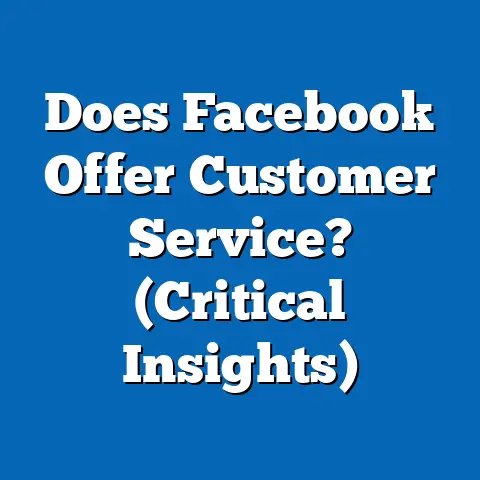Unlocking Low CPI Facebook Ads (Expert Strategies Revealed)
In the ever-evolving world of digital marketing, achieving a low Cost Per Impression (CPI) on platforms like Facebook remains a critical goal for advertisers seeking to maximize reach while minimizing expenditure. CPI, a metric that measures the cost of each thousand impressions, serves as a key indicator of advertising efficiency in a crowded digital space. This article delves into the strategies for unlocking low CPI on Facebook ads, with a specific regional focus on North America, Europe, and Asia-Pacific—regions that represent diverse economic, cultural, and technological landscapes.
Understanding the regional dynamics of digital advertising is essential, as consumer behavior, platform penetration, and economic conditions vary significantly across geographies. For instance, North America boasts high digital ad spend per capita, while Asia-Pacific is characterized by rapid mobile adoption and diverse markets. Europe, on the other hand, grapples with stringent data privacy regulations like GDPR that shape advertising strategies. This regional lens will uncover how historical context, defining characteristics, and societal factors influence the effectiveness of low CPI strategies.
Regional Focus: Defining Characteristics and Historical Context
North America: A Mature Digital Market with High Competition
North America, particularly the United States and Canada, represents one of the most mature digital advertising markets globally. With over 80% of the population active on social media platforms like Facebook, the region offers a vast audience but also intense competition among advertisers. According to eMarketer, U.S. digital ad spending reached $211 billion in 2022, with social media ads accounting for a significant share.
Historically, North America has been a pioneer in digital advertising since the early 2000s, driven by the rapid adoption of the internet and the rise of tech giants like Meta (Facebook’s parent company). The dot-com boom and subsequent technological advancements shaped a culture of innovation in advertising, with early adoption of targeted ads and data analytics. However, this maturity also means higher ad costs due to market saturation, making low CPI a challenging yet critical goal for brands.
Societally, North American consumers are tech-savvy but increasingly wary of data privacy issues, especially after high-profile scandals like Cambridge Analytica. This skepticism influences ad engagement, pushing advertisers to focus on transparency and value-driven content to maintain low CPI. Additionally, the economic disparity within the region—between urban tech hubs and rural areas—requires nuanced targeting to optimize costs.
Europe: Regulatory Challenges and Fragmented Markets
Europe presents a unique landscape for Facebook advertising due to its stringent regulatory environment and cultural diversity. The General Data Protection Regulation (GDPR), implemented in 2018, revolutionized how data is handled, forcing advertisers to adapt to stricter consent requirements and transparency rules. This regulatory shift has increased ad costs for some, as targeting capabilities are limited compared to pre-GDPR eras.
Historically, Europe’s digital ad market has grown steadily since the early 2000s, though at a slower pace than North America due to fragmented markets and varying levels of internet penetration across countries. For instance, while Northern Europe (e.g., Sweden, Denmark) boasts near-universal internet access, Southern and Eastern Europe lag slightly, impacting ad reach and costs. Statista reports that digital ad spending in Europe reached €86 billion in 2022, with social media ads growing despite regulatory hurdles.
Societally, European consumers value privacy and are often more critical of intrusive advertising, which can drive up CPI if ads fail to resonate. However, the region’s cultural diversity offers opportunities for hyper-localized campaigns that, when executed well, can achieve low CPI by targeting niche audiences effectively. Advertisers must balance creativity with compliance to succeed in this complex market.
Asia-Pacific: Rapid Growth and Mobile Dominance
The Asia-Pacific (APAC) region is a powerhouse of digital growth, driven by massive populations, rapid mobile adoption, and diverse economic conditions. Countries like China, India, and Indonesia have seen explosive growth in social media usage, with platforms like Facebook commanding hundreds of millions of users. According to Hootsuite, APAC accounts for over 60% of global social media users, making it a critical region for advertisers.
Historically, the region’s digital advertising landscape emerged later than North America and Europe, with significant growth occurring post-2010 alongside smartphone proliferation. Economic liberalization in countries like India and China, coupled with government-led digital initiatives (e.g., India’s Digital India campaign), created fertile ground for social media advertising. However, challenges like low purchasing power in some areas and language barriers necessitate cost-effective strategies to achieve low CPI.
Societally, APAC consumers are generally more receptive to digital ads, especially on mobile devices, where over 90% of internet access occurs. However, cultural nuances and varying levels of digital literacy mean that blanket strategies often fail. Achieving low CPI in APAC requires leveraging mobile-first campaigns, local languages, and culturally relevant content to engage diverse audiences.
Societal Implications of Regional Advertising Trends
The pursuit of low CPI on Facebook ads is not just a business objective; it reflects broader societal trends and implications. In North America, the focus on data-driven advertising raises questions about consumer trust and the ethical use of personal information. High-profile data breaches and privacy scandals have led to a growing demand for transparency, pushing advertisers to prioritize authenticity over aggressive targeting—a shift that can impact CPI.
In Europe, the regulatory environment has set a global precedent for data protection, influencing how advertisers operate worldwide. While GDPR compliance often increases costs initially, it fosters a culture of accountability that may enhance long-term consumer trust and engagement, potentially lowering CPI through better ad relevance. However, smaller businesses may struggle to adapt, widening the gap between large corporations and SMEs in the digital ad space.
In APAC, the rapid growth of digital advertising mirrors broader societal shifts toward urbanization and digital connectivity. While low CPI campaigns can drive economic opportunities by reaching underserved populations, they also risk exacerbating digital divides if access to technology remains uneven. Additionally, the cultural impact of globalized ad content in APAC raises concerns about the erosion of local traditions, prompting calls for more localized marketing approaches.
Expert Strategies for Unlocking Low CPI on Facebook Ads
Achieving a low CPI on Facebook ads requires a combination of strategic planning, creative execution, and data-driven optimization. Below are expert-recommended strategies tailored to regional nuances, supported by insights from industry leaders and quantitative data.
1. Audience Segmentation and Hyper-Targeting
One of the most effective ways to lower CPI is through precise audience segmentation. By leveraging Facebook’s robust targeting tools, advertisers can focus on specific demographics, interests, and behaviors, ensuring ads reach the most relevant users. For instance, in North America, where competition is fierce, narrowing down to niche audiences (e.g., local hobby groups) can reduce costs by minimizing wasted impressions.
In Europe, hyper-targeting must comply with GDPR, meaning advertisers should prioritize first-party data and opt-in mechanisms to build audiences. In APAC, where mobile usage dominates, targeting based on device type and app behavior (e.g., frequent use of e-commerce apps) can yield lower CPI. According to a 2022 study by Socialbakers, campaigns with detailed audience segmentation saw a 30% reduction in CPI compared to broad targeting.
Expert Tip: “Start with small, highly specific audience segments to test ad performance before scaling up,” advises Sarah Johnson, a digital marketing consultant with over a decade of experience in social media advertising. “This approach minimizes risk and optimizes costs, especially in competitive markets.”
2. Creative Optimization for Engagement
Ad creative plays a pivotal role in determining CPI, as engaging content naturally attracts more impressions at a lower cost. High-quality visuals, compelling copy, and clear calls-to-action (CTAs) are non-negotiable across all regions. However, cultural relevance is key—North American audiences may respond to humor and direct messaging, while European consumers often prefer subtle, value-driven ads.
In APAC, video content reigns supreme, especially short-form videos that cater to mobile-first users. A 2023 report by Meta revealed that video ads in APAC achieve 25% lower CPI compared to static images due to higher engagement rates. Testing multiple creative formats (e.g., carousel ads, stories) and using A/B testing to identify top performers can further optimize costs.
Expert Tip: “Invest in localized creative that speaks to cultural nuances,” suggests Rajesh Kumar, a Singapore-based digital strategist. “For APAC markets, even small tweaks like using local slang or festive themes can double engagement and slash CPI.”
3. Leveraging Lookalike Audiences
Facebook’s Lookalike Audiences feature allows advertisers to target users similar to their existing customers, often resulting in lower CPI due to higher relevance. This strategy works particularly well in North America, where robust customer data enables accurate lookalike modeling. A case study by HubSpot showed that brands using Lookalike Audiences saw a 20% decrease in CPI within the first month.
In Europe, building lookalike audiences requires careful data handling to ensure GDPR compliance, but the payoff is significant for brands with loyal customer bases. In APAC, where audience diversity is vast, lookalike audiences can help advertisers scale campaigns efficiently across different countries with similar consumer profiles.
Expert Tip: “Seed your lookalike audience with high-value customers, not just any data set,” recommends Emily Carter, a Facebook Ads specialist. “Quality input leads to quality output, especially in regions with diverse user bases like APAC.”
4. Optimizing Ad Placement and Timing
Ad placement and scheduling are often overlooked but critical factors in achieving low CPI. Facebook offers multiple placement options (e.g., News Feed, Stories, Marketplace), and costs vary significantly based on user behavior in each. For North American campaigns, News Feed placements often yield higher engagement but at a higher cost, while Stories can be a cost-effective alternative.
In Europe, where mobile usage varies by country, testing placements across devices is essential to identify cost-efficient options. In APAC, with mobile dominance, prioritizing mobile-first placements like Stories and in-app ads can lower CPI. Additionally, scheduling ads for peak engagement times—such as evenings in North America or lunch hours in APAC—can reduce costs by maximizing organic reach.
Data Point: According to a 2022 report by AdEspresso, optimizing ad placement and timing resulted in a 15-20% reduction in CPI across global campaigns.
5. Utilizing Automated Bidding Strategies
Facebook’s automated bidding tools, such as Cost Cap and Bid Cap, allow advertisers to set cost limits while letting algorithms optimize for impressions. This strategy is particularly effective in competitive markets like North America, where manual bidding can lead to overspending. Automated bidding also adapts to real-time market fluctuations, ensuring consistent low CPI.
In Europe, where ad costs are influenced by regulatory constraints, automated bidding helps maintain efficiency despite limited targeting options. In APAC, where rapid market growth can cause cost volatility, setting cost caps ensures scalability without budget overruns. A 2023 study by WordStream found that campaigns using automated bidding saw an average CPI reduction of 18%.
Expert Tip: “Don’t set and forget automated bidding—monitor performance weekly to adjust caps based on market trends,” advises Michael Lee, a digital ad strategist based in London. “This is especially crucial in volatile regions like APAC.”
6. Capitalizing on Seasonal and Cultural Trends
Seasonal events and cultural moments offer unique opportunities to achieve low CPI by aligning ads with high user engagement periods. In North America, holidays like Thanksgiving and Black Friday drive massive online activity, allowing advertisers to reach large audiences at lower costs due to high platform traffic. Data from Meta shows a 10-15% drop in CPI during major holiday seasons in the U.S.
In Europe, regional festivals (e.g., Christmas markets in Germany, Bastille Day in France) provide hyper-local opportunities for cost-effective campaigns. In APAC, events like Diwali in India or Lunar New Year across East Asia create spikes in user activity, making them ideal for low CPI campaigns. Tailoring content to these moments ensures relevance and boosts organic reach.
Case Study: A mid-sized retailer in India ran a Diwali-themed campaign in 2022, leveraging festive imagery and limited-time offers. By targeting regional audiences with localized messaging, they achieved a 40% lower CPI compared to their non-seasonal campaigns.
Comparative Analysis Across Regions
While the strategies above are universally applicable, their effectiveness varies by region due to differences in user behavior, competition, and regulatory environments. North America’s mature market demands precision targeting and high-quality creative to stand out, often resulting in higher baseline CPI compared to APAC. However, the region’s advanced data infrastructure allows for sophisticated optimization, balancing costs over time.
Europe’s regulatory landscape poses unique challenges, often leading to higher initial CPI due to compliance costs. Yet, the region’s emphasis on consumer trust can result in higher engagement for well-executed campaigns, ultimately lowering long-term costs. APAC, with its lower average CPI due to less saturated markets, offers immense potential for cost efficiency but requires careful navigation of cultural and linguistic diversity to avoid missteps.
A key takeaway is that no single strategy fits all regions—success lies in adapting to local conditions while leveraging global best practices. For instance, while automated bidding works well across all three regions, its impact is most pronounced in APAC due to market volatility. Similarly, cultural campaigns resonate deeply in APAC and Europe but require more nuanced execution in North America’s diverse yet homogenized digital space.
Technological, Economic, and Social Factors Influencing CPI
Technological Factors
The rapid evolution of technology shapes how advertisers achieve low CPI. Facebook’s algorithm updates, such as the shift to privacy-focused tracking post-iOS 14.5, have forced marketers to rely less on third-party data, impacting targeting precision. In North America and Europe, where Apple users are significant, this change has driven up CPI for some campaigns, necessitating a pivot to contextual targeting and first-party data.
In APAC, where Android dominates, advertisers face fewer tracking limitations, allowing for more cost-effective campaigns. However, the region’s varying levels of tech infrastructure mean that rural audiences may be harder to reach, potentially increasing CPI for broad campaigns. Staying ahead of technological shifts—such as the rise of AI-driven ad tools—will be critical for maintaining low costs across regions.
Economic Factors
Economic conditions directly influence ad costs and consumer behavior. In North America, high disposable income supports robust ad spend, but economic downturns (e.g., post-COVID inflation) can reduce consumer engagement, driving up CPI. Europe faces similar challenges, compounded by economic disparities between Western and Eastern countries, which affect ad budgets and targeting strategies.
APAC’s economic diversity—from affluent markets like Singapore to emerging economies like Vietnam—creates both opportunities and challenges for low CPI. While lowerNelow-cost campaigns can target price-sensitive consumers in emerging markets, more established markets require premium positioning to justify higher costs. Understanding regional economic conditions is key to balancing cost and reach.
Social and Cultural Factors
Social attitudes toward advertising and digital privacy shape CPI outcomes. North American consumers, wary of data misuse, respond better to non-intrusive, value-driven ads, while European audiences prioritize privacy, often rejecting overly personalized campaigns. APAC consumers, generally more open to digital ads, still require culturally relevant content to avoid alienation.
Generational differences also play a role—younger users (Gen Z and Millennials) across all regions are more active on social media, offering lower CPI potential through trendy, visually engaging content. Older demographics, more prevalent in North America and Europe, may require different approaches, such as trust-building narratives, to achieve cost efficiency.
Nuances and Diversity Within Regions
It’s critical to acknowledge the diversity within each region when crafting low CPI strategies. North America, for instance, encompasses urban tech hubs like Silicon Valley and rural areas with limited digital access, requiring tailored approaches to targeting and creative. Similarly, Europe’s cultural and linguistic diversity—spanning over 40 countries—means a one-size-fits-all campaign will likely fail to achieve low CPI.
APAC’s diversity is even more pronounced, with stark differences between urbanized Singapore and rural India, or between tech-savvy South Korea and less connected regions like Myanmar. Advertisers must segment audiences not just by demographics but by socioeconomic status, language, and digital literacy to optimize costs effectively. Oversimplification risks alienating key segments and driving up CPI through poor engagement.
Implications for Society, Culture, and the Workplace
Societal Impact
The drive for low CPI on Facebook ads reflects broader societal trends toward digitalization and data-driven decision-making. While cost-effective advertising can democratize access to markets for small businesses, it also raises ethical questions about data privacy and consumer manipulation, particularly in North America and Europe. Striking a balance between efficiency and ethics will be crucial for sustaining consumer trust.
Cultural Impact
Advertising shapes cultural narratives, and low CPI campaigns that prioritize reach over relevance risk diluting local identities, especially in APAC where global brands often dominate. Conversely, culturally attuned campaigns can reinforce traditions and foster inclusivity, enhancing brand loyalty and lowering costs through organic engagement. The challenge lies in navigating globalization without erasing cultural uniqueness.
Workplace Implications
For marketing teams, the pursuit of low CPI necessitates upskilling in data analytics, creative design, and regional expertise. Remote and hybrid work models, accelerated by the COVID-19 pandemic, have enabled global collaboration on ad campaigns, but also require cultural sensitivity to avoid missteps in diverse markets. Companies must invest in training to equip teams for the complexities of regional advertising.
Forward-Looking Insights and Uncertainties
Looking ahead, the landscape for low CPI on Facebook ads will likely be shaped by several trends. Advances in AI and machine learning promise more precise targeting, potentially lowering costs, but also raise privacy concerns that could lead to stricter regulations globally, following Europe’s lead. The rise of alternative platforms like TikTok and Instagram Reels may shift ad budgets, increasing competition and costs on Facebook unless the platform innovates.
Regional dynamics will also evolve—APAC’s digital growth shows no signs of slowing, offering sustained opportunities for low CPI, while North America and Europe may face market saturation, necessitating creative disruption to maintain efficiency. Uncertainties remain, including the impact of economic instability (e.g., inflation, recessions) on ad spend and consumer behavior, as well as potential policy shifts around data privacy.
Ultimately, achieving low CPI requires a forward-thinking mindset—advertisers must anticipate technological, cultural, and regulatory shifts while remaining agile in their strategies. By blending regional insights with global best practices, marketers can navigate uncertainties and unlock cost-effective campaigns that resonate with diverse audiences.
Conclusion
Unlocking low CPI on Facebook ads is a multifaceted challenge that demands a deep understanding of regional characteristics, historical context, and societal trends. From North America’s competitive maturity to Europe’s regulatory rigor and APAC’s dynamic growth, each region offers unique opportunities and obstacles for advertisers. By employing expert strategies—such as precise segmentation, creative optimization, and automated bidding—marketers can achieve cost efficiency while respecting cultural and ethical considerations.
The societal implications of digital advertising extend beyond business metrics, influencing consumer trust, cultural identity, and workplace dynamics. As the digital landscape evolves, staying ahead of technological and regulatory changes will be paramount. While uncertainties persist, a commitment to data-driven, regionally attuned strategies will empower advertisers to lower CPI and build meaningful connections with global audiences.






